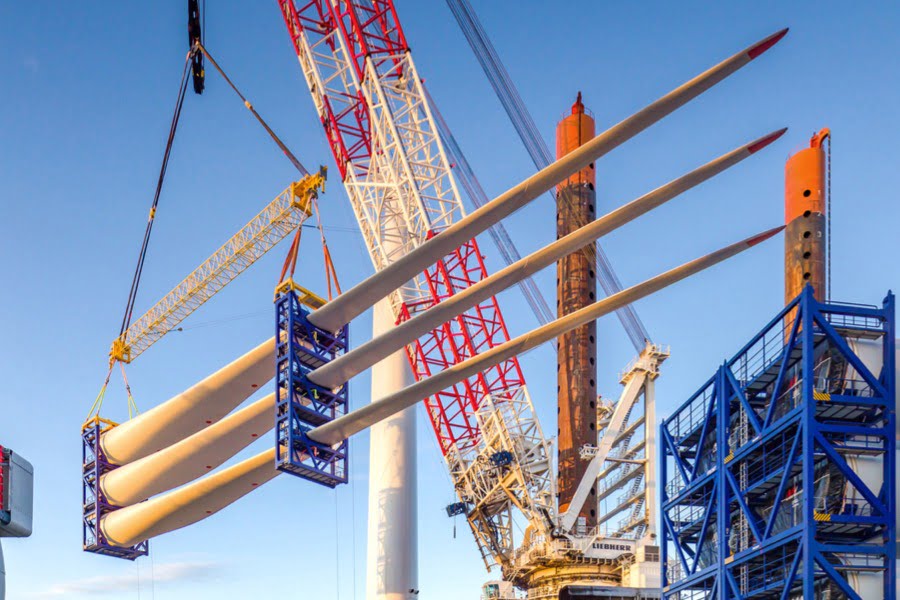Wind energy
Wind energy is a type of renewable energy that uses the natural power of the wind to generate electricity, through the use of wind turbines. Individual wind turbines can be used to generate electricity on a small scale – to power a single home, for example. Or a large number of wind turbines can be grouped together – known as a wind farm – to generate electricity on a much larger scale.
Offshore wind farms are usually larger than those onshore and they can produce much more energy. They also benefit from higher and more consistent wind speeds.
How wind turbines work
A wind turbine obtains its power input by converting the force of the wind into a torque (turning force) acting on the rotor blades. The amount of energy which the wind transfers to the rotor depends on the density of the air, the rotor area, and the wind speed. The rotor and blades spin the main shaft and gearbox which spins the generator, resulting in electrical output. Each wind turbine is made up of a number of individual parts, all of which perform specific roles in capturing and optimising the wind.
Wind turbine blades
Blades are typically made from fiberglass and epoxy resin, although there are variations between designs, with some using carbon fibre; others use polyester resins. Around two thirds of blades are manufactured in-house by the wind turbine manufacturer, including most offshore blades. For the wind turbine blades to rotate, the face of the turbine must point into the wind. Because each blade of the wind turbine is angled in a special way – like an aeroplane’s wing – a force known as a ‘lift’ is generated on one side, and the blades start to spin round. A sensor on the roof of the nacelle constantly monitors the wind direction and speed to make sure the wind turbine keeps pointing into the face of the wind.
Gearbox: To generate electricity, the shaft in the generator needs to turn very fast, well over 1,000 revolutions per minute. But this is too fast for the huge blades of a wind turbine, therefore a gearbox is used, enabling the shaft going into the front of the gearbox to rotate at low speed, with the shaft coming out of the back able to turn many times faster.
Wind turbine anemometer
An ‘anemometer’ calculates how fast the wind is going, so that the turbine can brake if it’s turning too fast. The primary braking system for most modern wind turbines is the aerodynamic braking system, which essentially consists in turning the rotor blades about 90 degrees along their longitudinal axis, and the other is a disc brake connected to the high-speed shaft within the nacelle.
Nacelle
The nacelle supports the three blade bearings and transfers the reaction forces from the blade bearings to the main shaft. It includes a main structure and three stiffening plates (one per blade). All components are made of cast iron. The hub structure also provides support for the pitch system supplying the interfaces for pitch cylinders and for blade bearings. When the wind direction alters, the nacelle is rotated by hydraulic motors so that the rotor blades face into the wind to maximise the energy captured.
Electricity generator
The shaft coming out of the gearbox is connected to a generator. Electricity is produced when a magnetic field rotates within the stator (the static part of the generator). The different generator concepts produce this magnetic field in different ways but ultimately produce electricity using the same principles. The most common generators produce power at 690v, which is transformed within the wind turbine to a higher voltage usually 33kV or 66kV.
Electricity transmission
The electrical energy produced by the wind turbines is transmitted through subsea cables to an offshore substation. Here the electricity is converted to a higher voltage, before being delivered via underground cables to an onshore substation (operated by the national electricity provider) and subsequently transmitted to homes and businesses through the national electricity grid.
In Ireland, EirGrid operates the flow of power on the grid and plans for its future, while ESB Networks is responsible for carrying out maintenance, repairs and construction on the grid.





